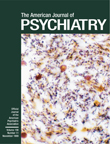Recurrence of Neuroleptic Malignant Syndrome With Olanzapine Treatment
Ms. A, a 70-year-old woman with a history of schizoaffective illness, was admitted to our inpatient unit with an acute psychotic-manic episode. Two years and 1 year before this admission, she had been treated for similar episodes with the antipsychotic medications chlorprothixene and then zuclopenthixol HCl; both times this treatment resulted in the symptoms of neuroleptic malignant syndrome. Ms. A had been free of antipsychotic medication for over 6 months. Therefore, treatment with olanzapine, a new atypical antipsychotic medication that was not known to be connected with neuroleptic malignant syndrome, was initiated, 5 mg/day, concurrent with treatment with carbamazepine and betahistine. Because of Ms. A’s extreme restlessness, her dose of olanzapine was increased to 10 mg/day after 2 days. Immediately, a fever of 37.8°C appeared; she had a pulse of 120 bpm and a blood pressure level of 180 mm Hg diastolic and 100 mm Hg systolic. Ms. A’s creatine phosphokinase level was extremely elevated—1,573 U/liter. Ms. A’s parkinsonian symptoms included cogwheel rigidity. Olanzapine treatment was discontinued; Ms. A had a corresponding resolution of her neuroleptic malignant syndrome symptoms over 3 days. Ms. A’s creatine phosphokinase level on the third day was 343 U/liter. Her psychotic symptoms were barely controlled with high doses of benzodiazepines added to her medication regimen.
References
Information & Authors
Information
Published In
History
Authors
Metrics & Citations
Metrics
Citations
Export Citations
If you have the appropriate software installed, you can download article citation data to the citation manager of your choice. Simply select your manager software from the list below and click Download.
For more information or tips please see 'Downloading to a citation manager' in the Help menu.
View Options
View options
PDF/EPUB
View PDF/EPUBGet Access
Login options
Already a subscriber? Access your subscription through your login credentials or your institution for full access to this article.
Personal login Institutional Login Open Athens loginNot a subscriber?
PsychiatryOnline subscription options offer access to the DSM-5-TR® library, books, journals, CME, and patient resources. This all-in-one virtual library provides psychiatrists and mental health professionals with key resources for diagnosis, treatment, research, and professional development.
Need more help? PsychiatryOnline Customer Service may be reached by emailing [email protected] or by calling 800-368-5777 (in the U.S.) or 703-907-7322 (outside the U.S.).

